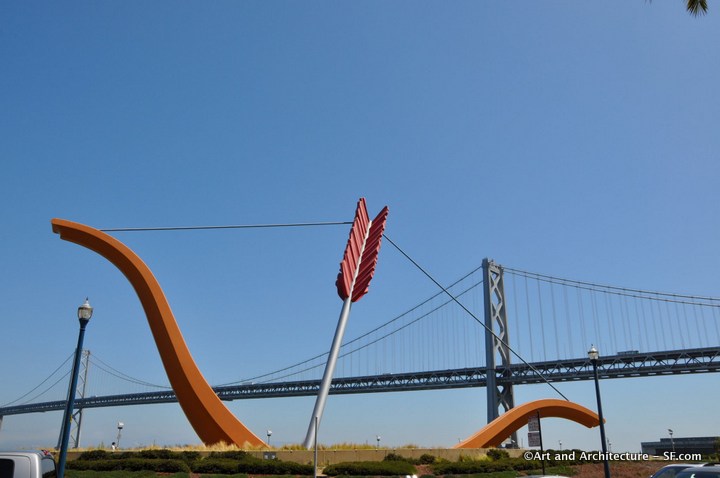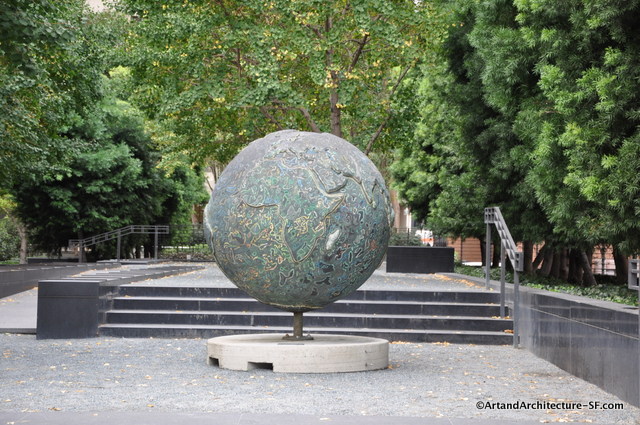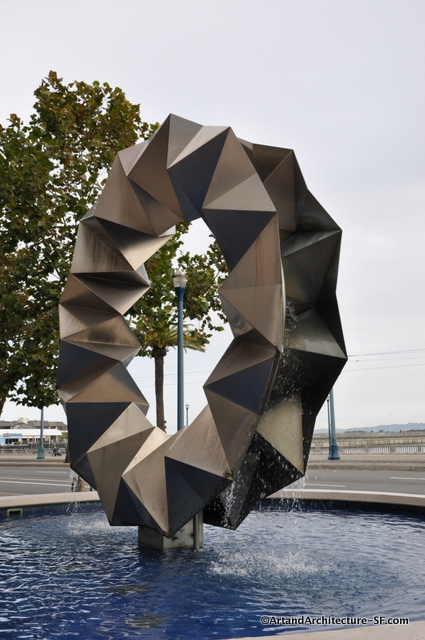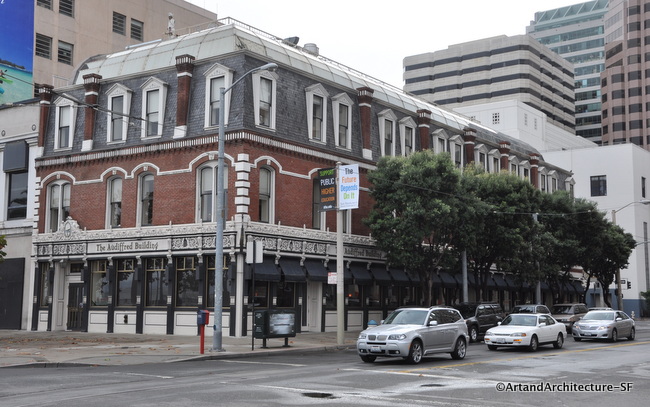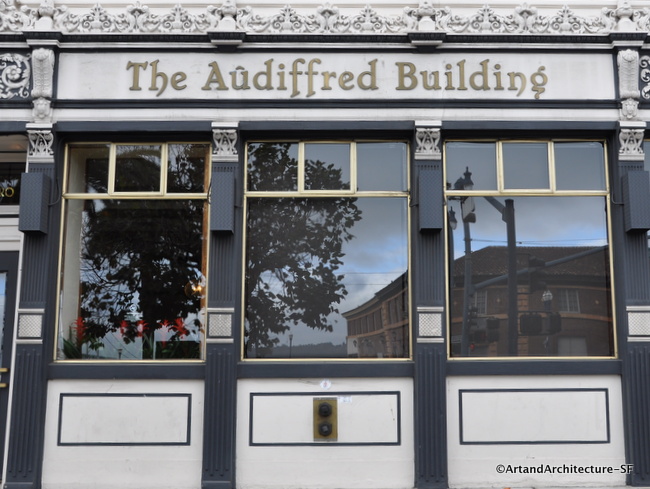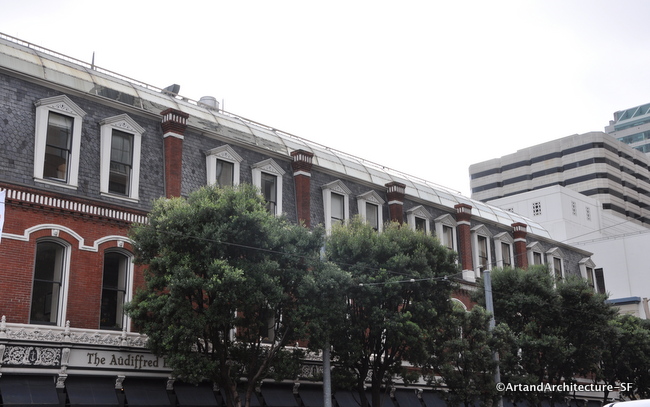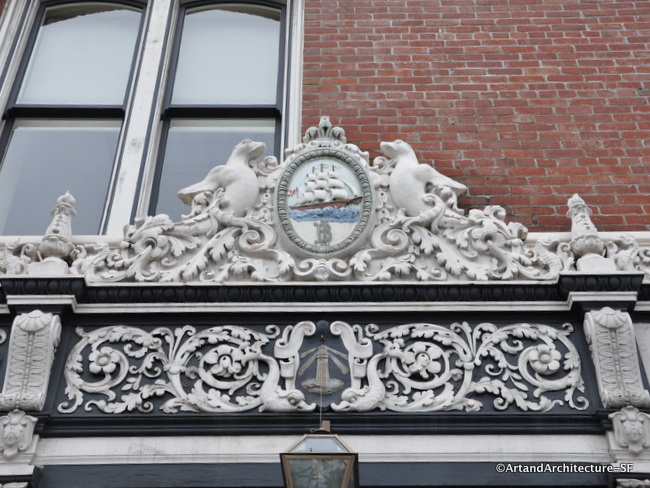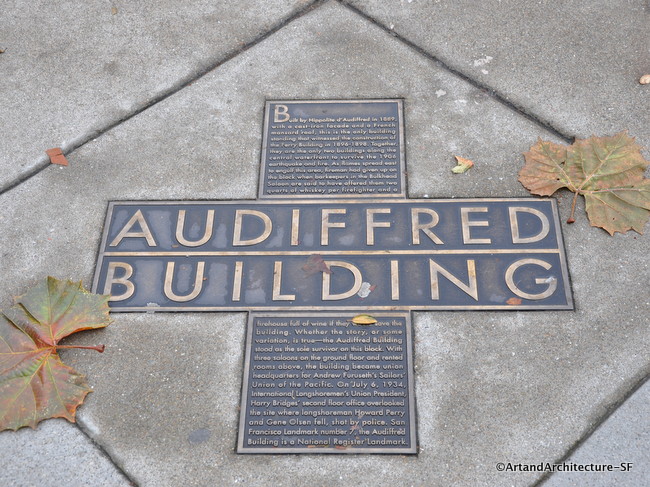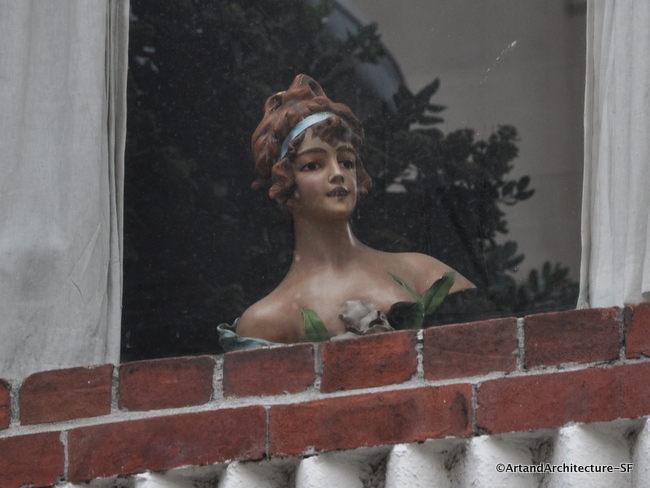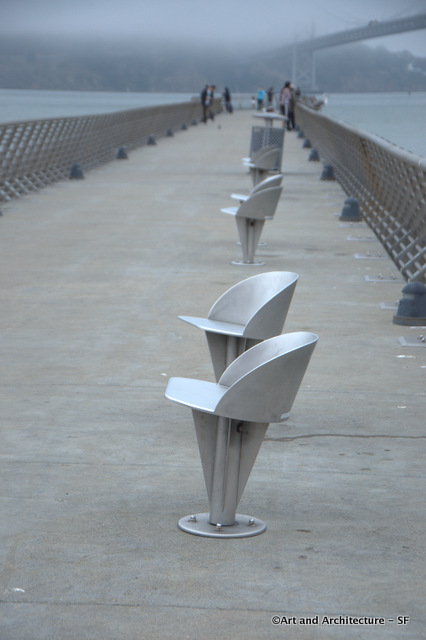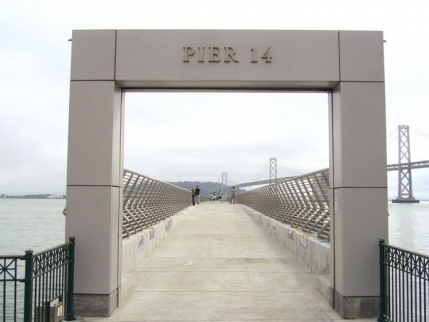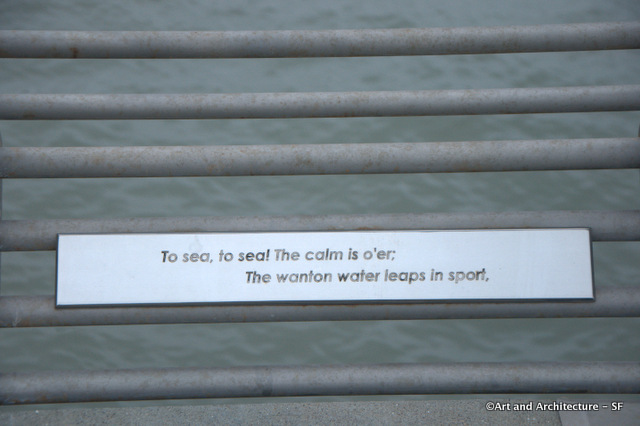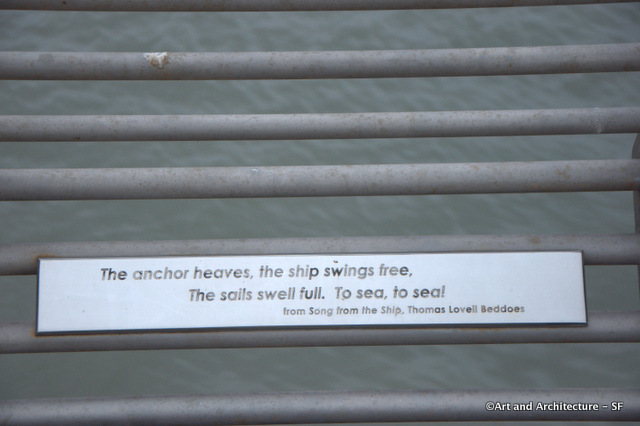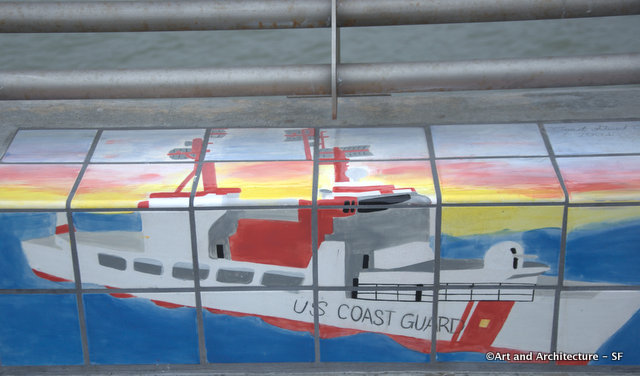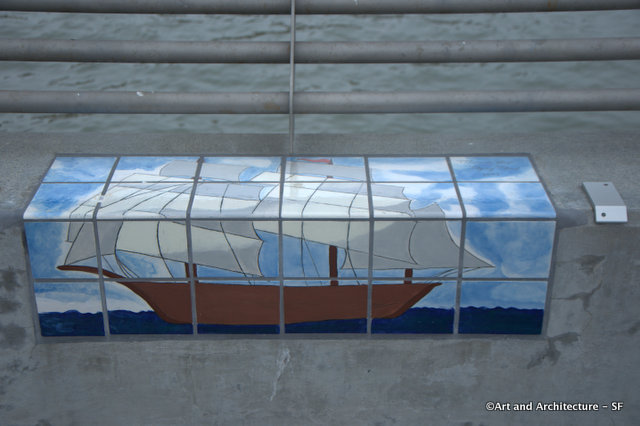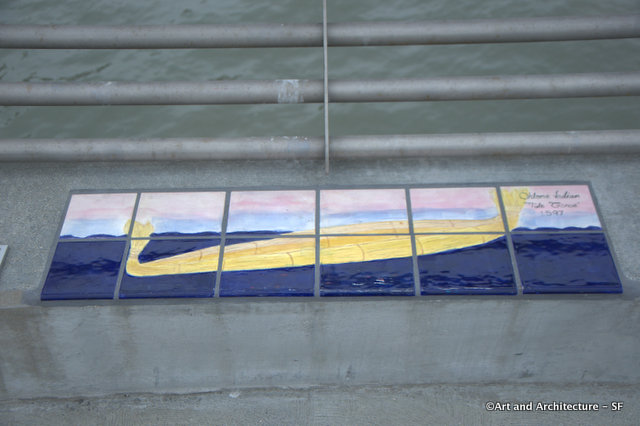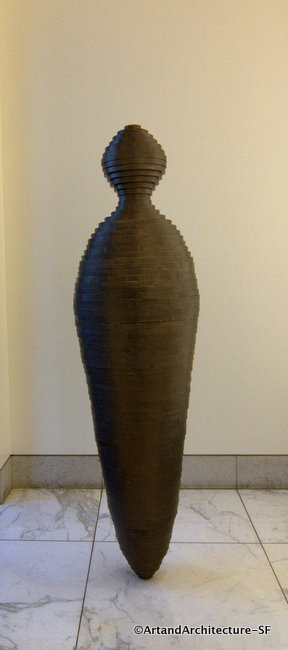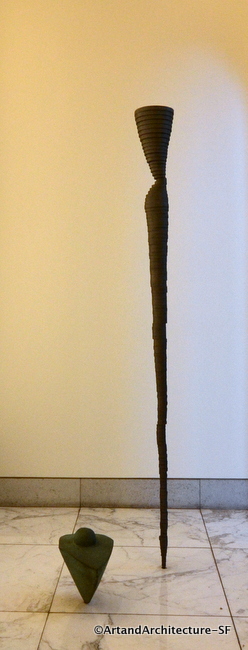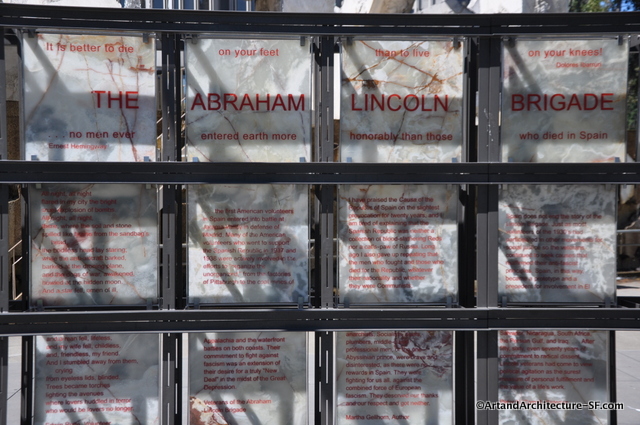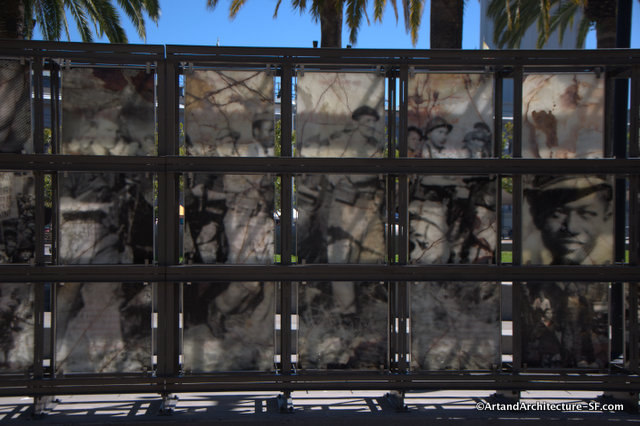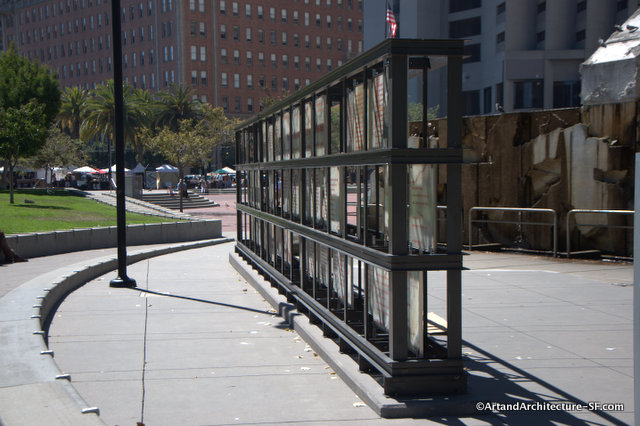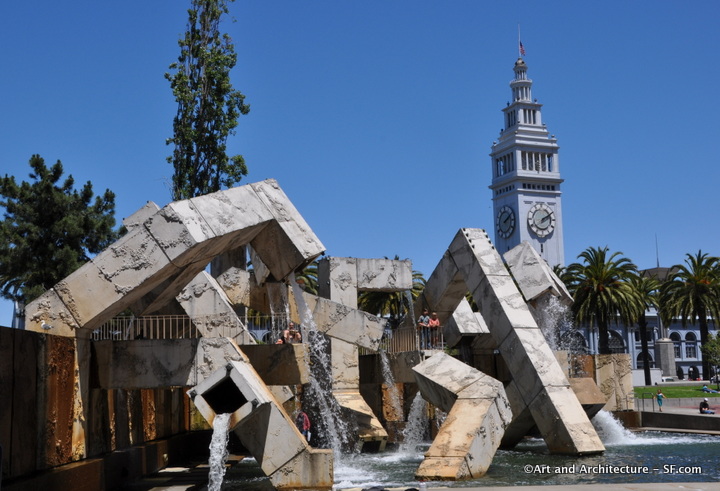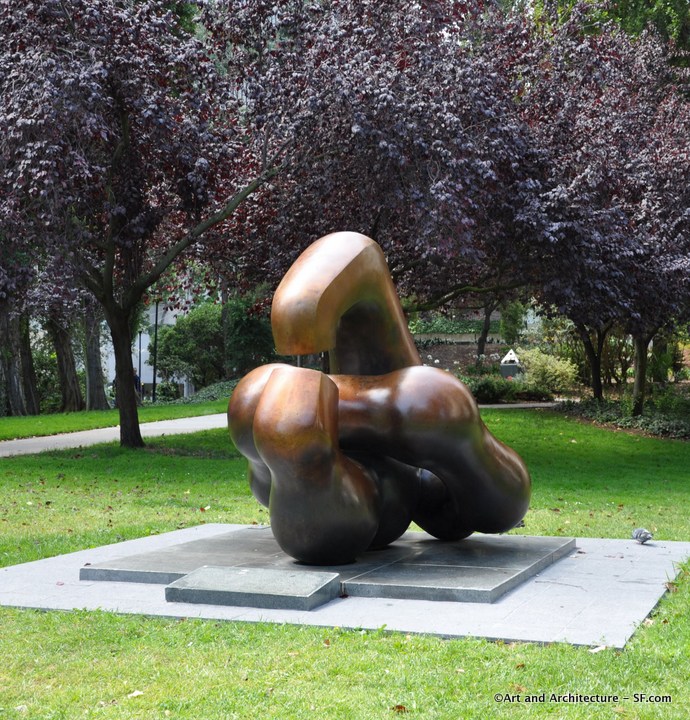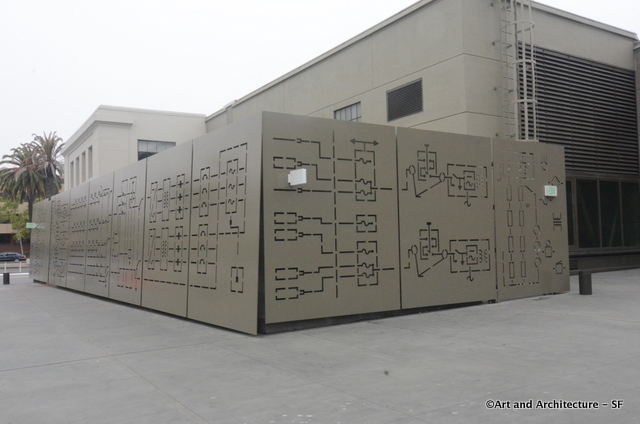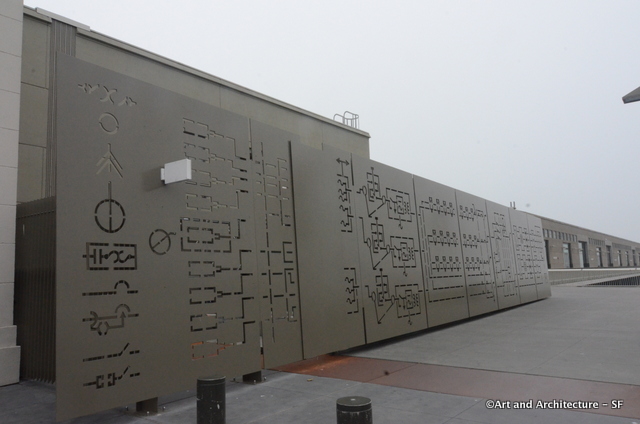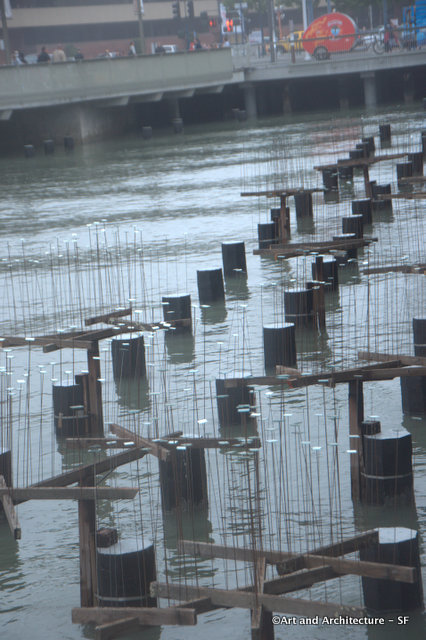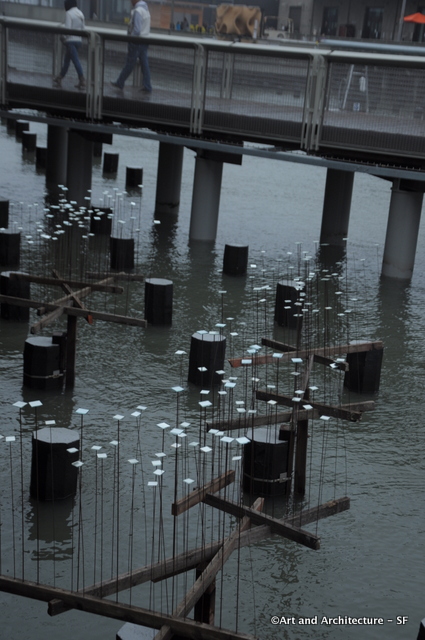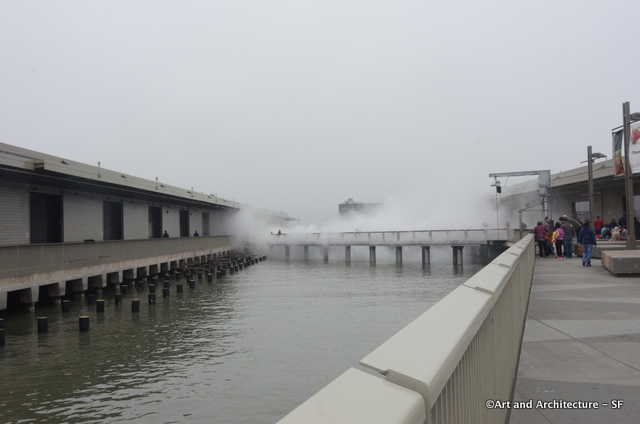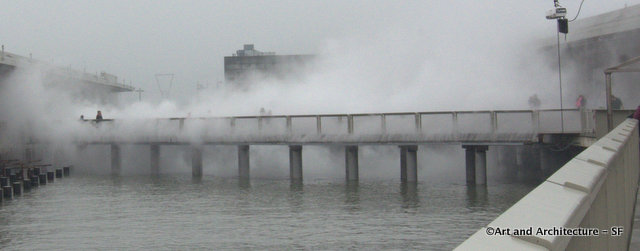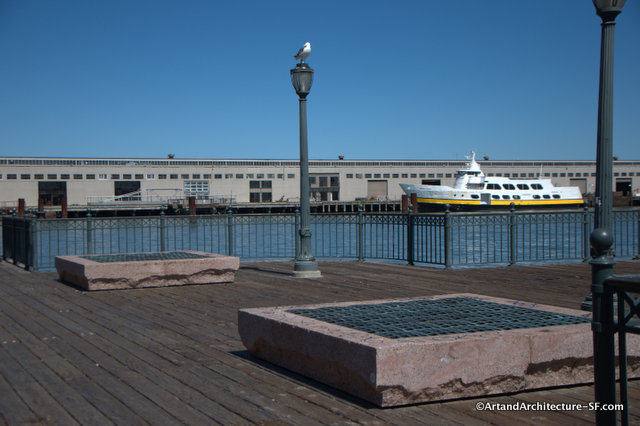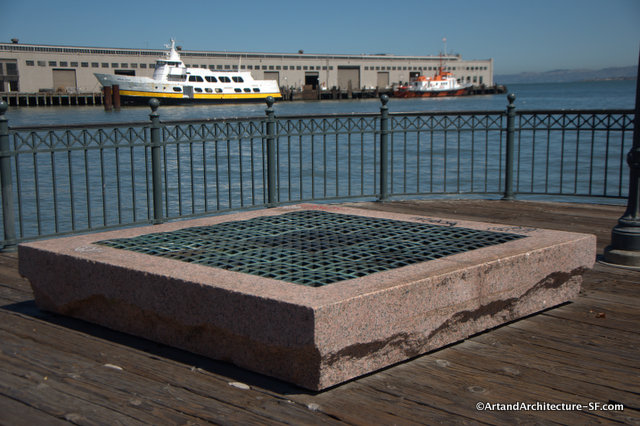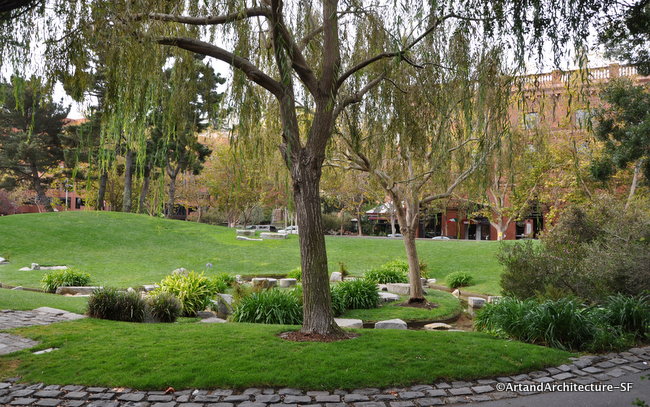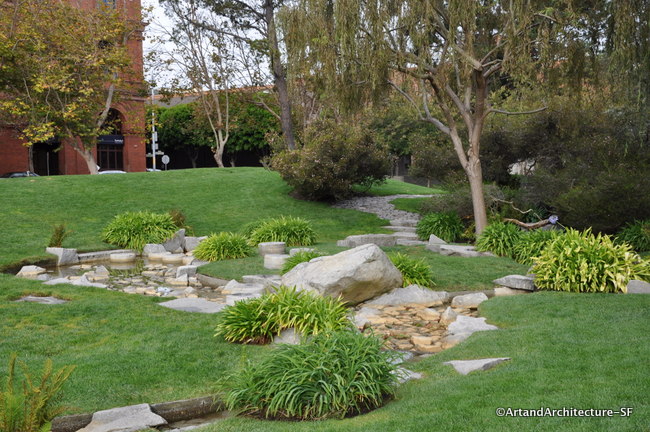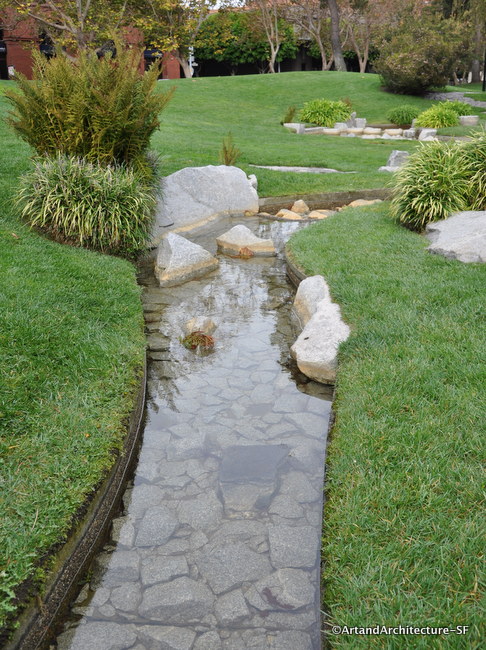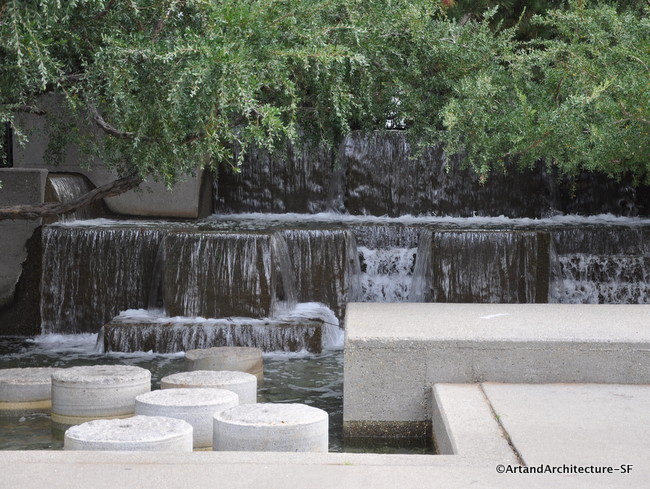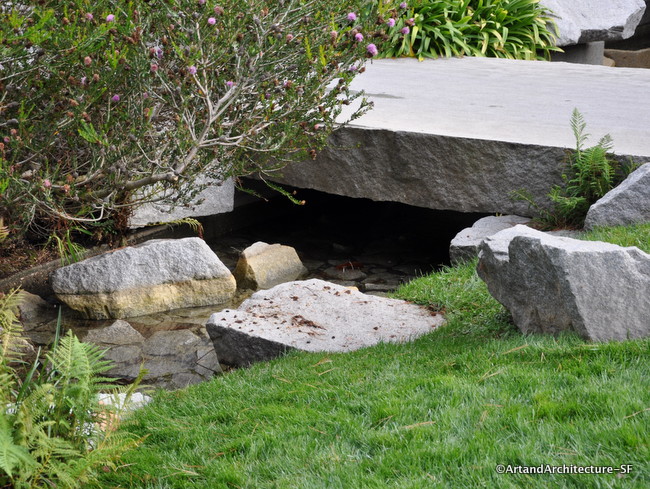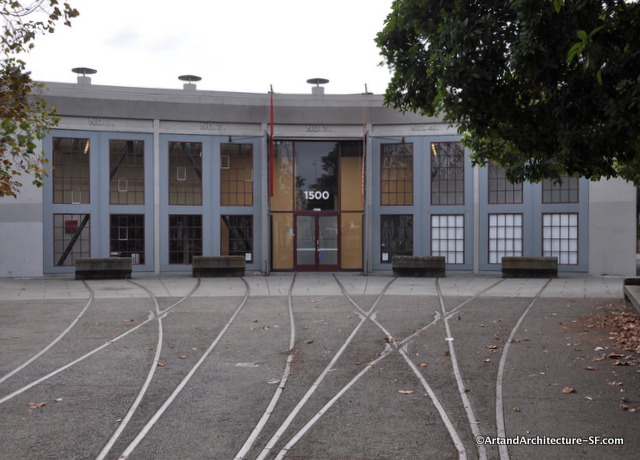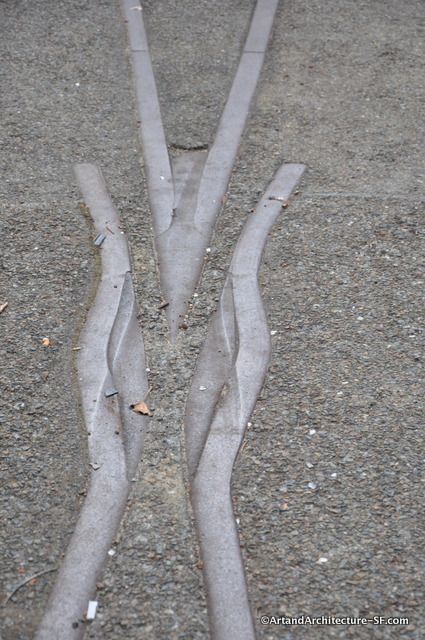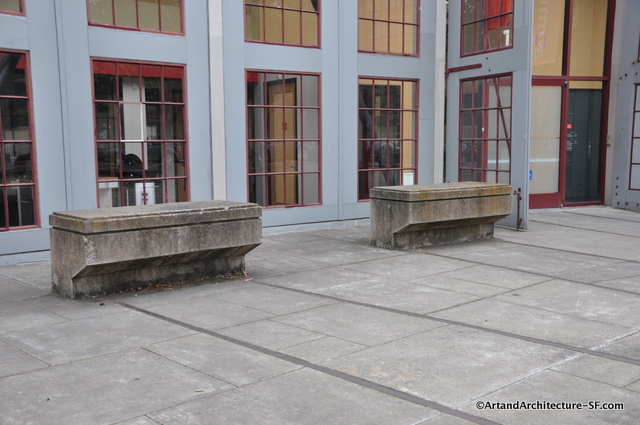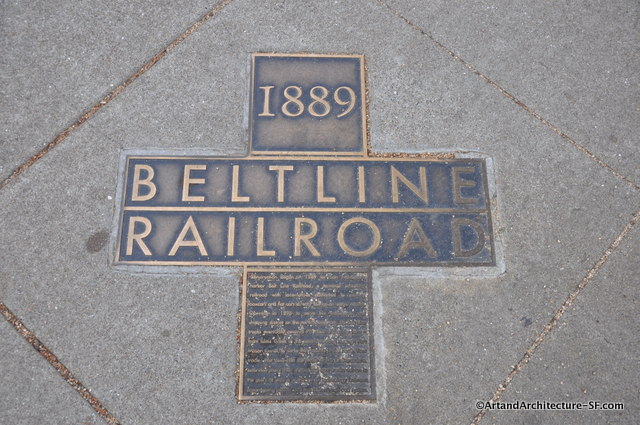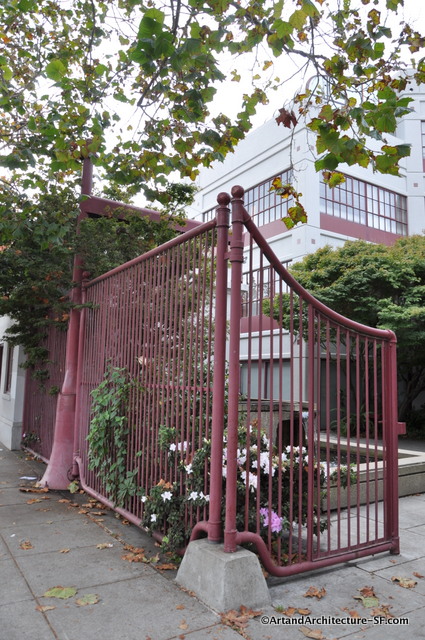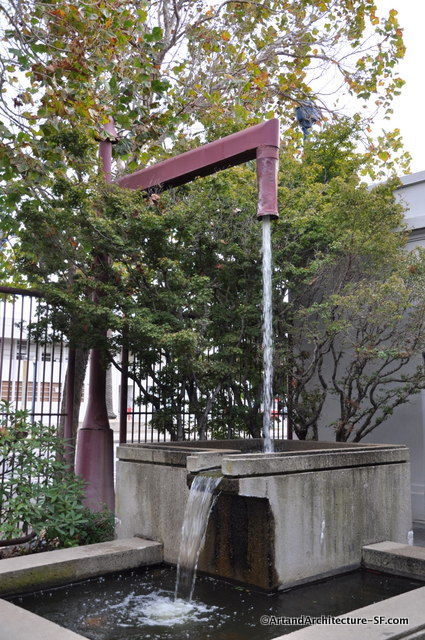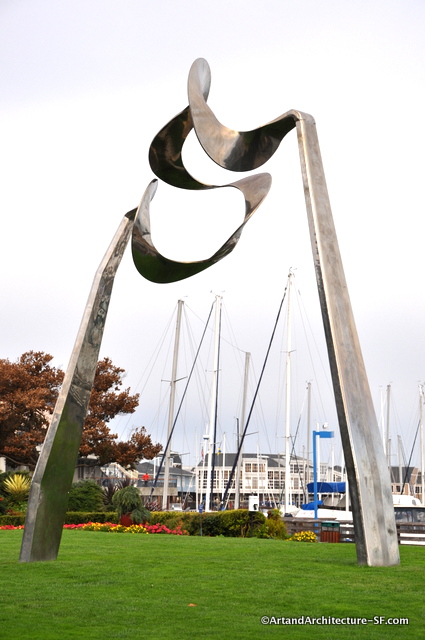The Embarcadero
The San Francisco Bay Trail is a bicycle and pedestrian trail that will eventually allow continuous travel around the shoreline of San Francisco Bay. As of 2011, approximately 310 miles of trail have been completed. Twenty six miles of the trail lies in the City of San Francisco one half of which is finished. The portion in San Francisco is expected to be completed in 2030 at a cost of approximately $6 million. The stretch along The Embarcadero is decorated with wonderful brass plaques set into the sidewalk explaining the fauna found in the area.
The following plaques will be found on the water side of The Embarcadero between Candlestick and Pier 39.
Each creature is accompanied by an explanatory brass plaque.
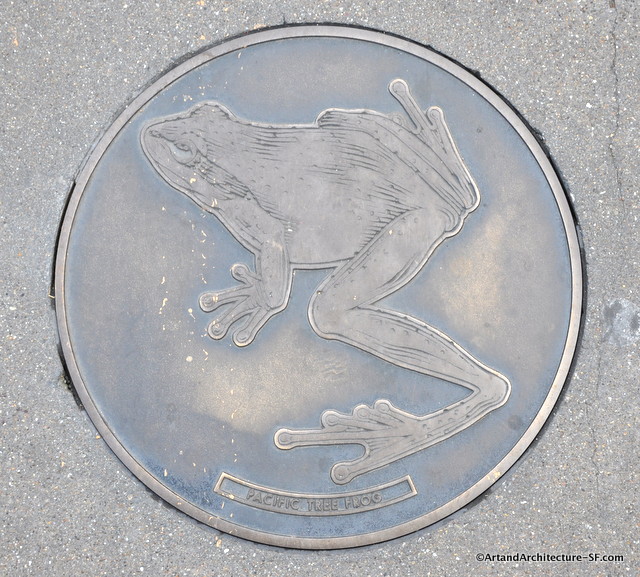
Pacific Tree Frog
Mostly nocturnal, this native amphibian seeks shelter not in trees but in fissures of rocks, in nooks and crannies of buildings and in plants along stream beds. It ranges from deep green to brown to gray with a tell-tale eye mask extending from nostril to shoulder. With a voice disproportionate to its two-inch body, a chorus of tree frogs’ kree-eks drowns out all else.
Burrowing Owl
Nesting in vacant burrows, this small, earth-brown owl is often seen in open country, hovering just above its prey it has a stubby tail and always stands upright, whether perching or on ground. When startled, it bobs up and down on long legs, making a sound like a rattlesnake. Burrowing owls mate for life, their song is a soft coo-c-o-o.
Dungeness Crab
Looking much less clumsy underwater than on shore, this big crab slides lightly over the sea floor on the tips of its legs. When startled or preying on fish, it can move with great speed. Spending much of its life almost buried in sand, the Dungeness Crab is found in water from 100-300-feet deep, coming to shallow water only to molt. It has a grayish-brown shell tinged with purple.
Red Tailed Hawk
Sadly, the Red Tailed Hawk’s explanation plaque was missing but if you are interested in reading about them here is the
Wikipedia link. Ochre Sea Star
This coastal sea star is 10-inches across; it has five stout, tapering arms and a center disk embossed with a geometric pattern of stark white spines Its color actually ranges from yellow to orange and brown to purple. Found in great abundance on wave-washed rocky shores, both above and below the low-tide, it creeps about with a slow, gliding motion.
Mule Deer
Feeding on grass, twigs, fruits and acorns, this black-tailed deer inhabit forests; open woodlands and chaparral. Throughout Fall and Winter, bucks and does stay together, but in Spring does wander off to bear their young. Mule Deer bed down during the day in leafy thickets where newborn fawns, with their lightly-spotted coats, are perfectly camouflaged.
Salt Marsh Harvest Mouse
This petite mouse has rich brown fur on its upper parts and a lighter, tawny belly. It avoids open fields, making its home in the dense pickle weed stands of salt marshes. Though a good swimmer a feeding Salt Marsh Harvest Mouse might scurry to higher ground when the bay tides rise, briefly exposing itself to an awaiting egret or hawk.
Chinook Salmon
Most of their lives, these fish are seagoing, but starting in mid-December, they journey up-river to spawn and die in the very waters where they hatched. From the time they leave the ocean until they spawn, five to eight months later, they survive without feeding. At sea, Chinook Salmon have gray backs and silver sides, when spawning, they range from olive to maroon.

